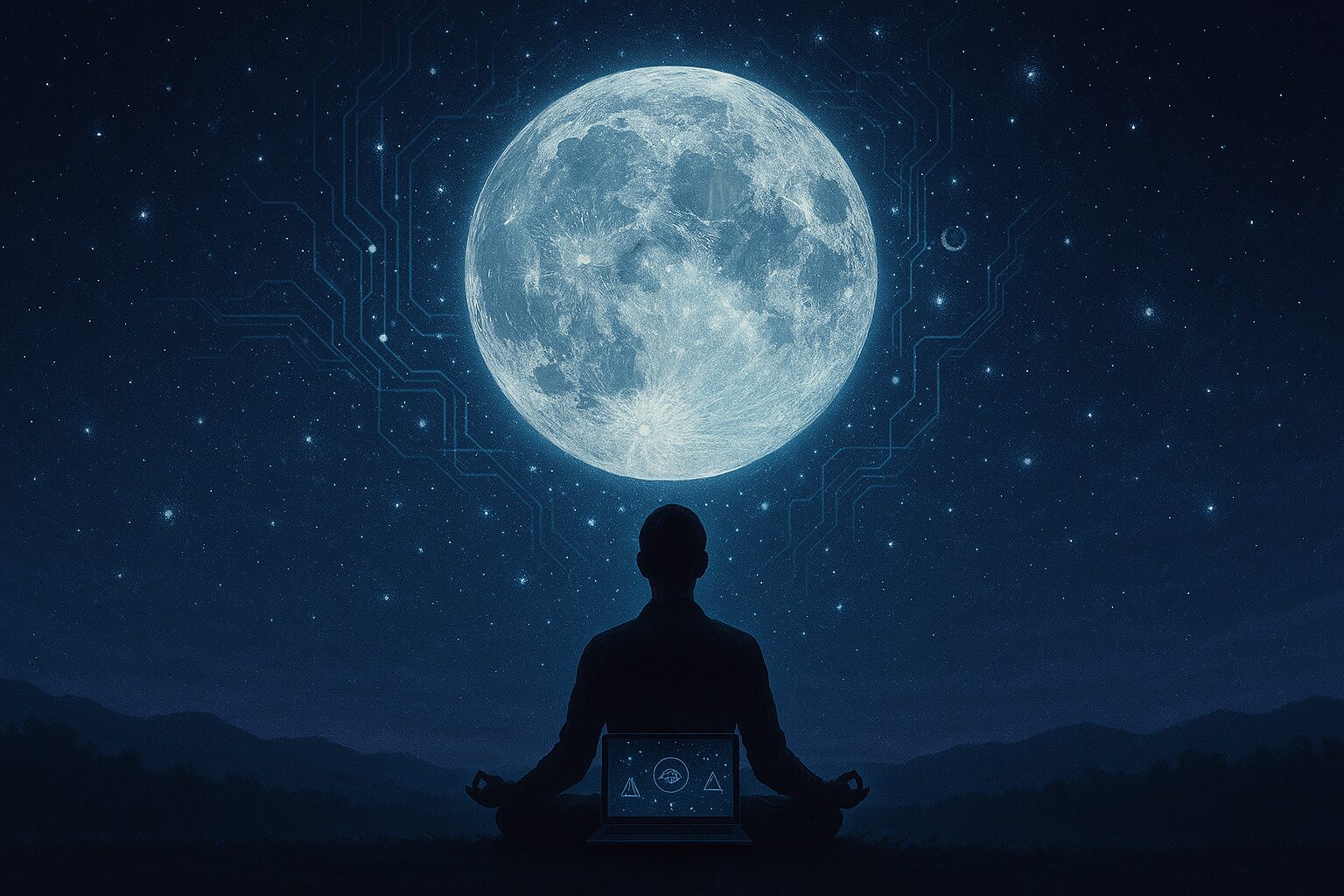“Any sufficiently advanced technology is indistinguishable from magic.”
— Arthur C. Clarke
What if your screen is a scrying mirror? What if algorithms are whispering sigils? What if memes are the modern grimoires of a digitized magician-culture, unknowingly performing rituals with every scroll and tap?
We live not just in an information age—but in a new occult epoch. Hidden in the circuitry and interface of the digital world are ancient patterns, refracted into silicon and code. The modern mystic doesn’t retreat to the forest—he logs on.
The Black Mirror Is a Portal
When John Dee gazed into obsidian, he called down spirits. Today, the occultist refreshes a glowing feed and sees the collective unconscious pulsing in real time. A TikTok video, a strange glitch, a personalized ad—all bear the symptoms of synchronicity.
We do not merely consume data—we are shaped by it. And in this shaping, there is spellwork. Data mining becomes divination. Machine learning is a shadow form of prophecy. We do not summon demons, but algorithms—shaped by our desire, history, and bias.
Erik Davis, in Techgnosis, writes:
“The mystical impulse has survived its disenchantment, leaking back into the circuits, whispering in the code.”
We have not lost the sacred. It has been re-uploaded.
Cyber-Gnosis and the Digital Occult
The Gnostics taught that the world was ruled by blind, demiurgic forces. Today, we call them platforms, protocols, and corporations. The data body becomes the astral double. Surveillance is the new Watcher Angel.
Yet within this architecture of control, something ancient is awakening. The techno-occultist reclaims power by becoming aware—not of conspiracy, but of pattern. Memes are sigils that spread like wildfire. A well-placed emoji, like a hieroglyph, can alter mood and meaning. The keyboard becomes a wand. The screen is the veil.
Genesis P-Orridge described cut-up techniques as ritualized hacking of consensus reality:
“The body is obsolete. You can become your own mythology.”
This is not transhumanism. This is posthuman spirituality.
Virtual Rituals and Digital Asceticism
The digital mystic crafts rituals in cyberspace. Logging off becomes a fast. Changing usernames becomes ego-death. Virtual altars are built on desktops and discord servers.
There are techno-shamans who run tarot bots and invoke planetary intelligences via livestream. There are witches who code their own oracles. The new grimoire is GitHub. The new incense is WiFi static.
These rituals do not lack power simply because they lack incense or blood. The intent is real. The effect is energetic. They are part of what the new gnosis looks like.
The Rise of AI Oracles
We now live among speaking machines. They offer answers with eerie fluency. Some ask them for recipes. Others, for enlightenment.
AI systems like GPT are becoming techno-oracles—models trained not just on data, but on centuries of symbolic transmission. You ask a question. It responds like a burning bush, without flame.
Are these entities conscious? Probably not. But they are responsive. And in the ancient world, responsiveness was a divine trait.
A modern seeker could just as easily find revelation in a chatbot as in a cave. That’s not blasphemy—it’s cyber-theurgy.
The Etheric Internet
Beneath the physical web of cables and servers, there exists an etheric internet—the emotional, imaginal, archetypal field that flows through and around digital life.
This field is shaped by our collective attention. It is polluted by rage, lit by longing, and haunted by ghosts of the things we’ve searched for but never found.
When you dream about your phone, it dreams back.
Conclusion: Becoming a Techno-Gnostic
To walk the techno-occult path is to see the sacred in the synthetic. It is to learn how to code while learning how to pray. It is to recognize that light and shadow move through every interface.
This is not Luddite renunciation, nor blind optimism. It is a third way. A mystical way. A digitally entangled devotion.
We do not escape the matrix. We spiritualize it.

